African Artifacts – Beauty, History, and Meaning
African artifacts come in many different shapes and sizes, as the African continent is an immensely varied place with multitudinous cultures and peoples. In this article, we will examine ten of these African artifacts while focusing on their history and a few of their characteristics. So, keep reading to learn a lot more about a variety of artifacts that range from ancient African artifacts, all the way until slightly more recent times. Hopefully, you learn a lot!
Contents
- 1 A Look at African Artifacts
- 1.1 Mask of Tutankhamun (1323 BCE) from Egypt
- 1.2 Rosetta Stone (196 BCE) from Egypt
- 1.3 Lydenburg Heads (Around 500 CE) from South Africa
- 1.4 Golden Rhinoceros of Mapungubwe (1075 – 1220 CE) from South Africa
- 1.5 Zimbabwe Birds Sculptures (12 – 15th Centuries CE) from Zimbabwe
- 1.6 Benin Bronzes (From the 13th Century CE) from Nigeria
- 1.7 Seated Figure (14th Century CE) from Mali
- 1.8 Bronze Head from Ifẹ̀ (14 – 15th Centuries CE) from Nigeria
- 1.9 Bangwa Queen (19th Century) from Cameroon
- 1.10 Tsavo Man-Eaters (1898) from Kenya
- 2 Frequently Asked Questions
A Look at African Artifacts
Below you will find a list of African artifacts from around the African continent. Before starting on the list, it may be best to know that the creators of many of these artifacts are generally unknown as there is a long oral tradition in Africa that did not generally record the names of the individuals who created anything.
So, we can only know a few things about these items, but we know enough for them to be of interest. Keep reading to learn more.
Mask of Tutankhamun (1323 BCE) from Egypt
| Creator | Unknown |
| Date | 1323 BCE |
| Materials Used | Copper and gold |
| Function | Funerary mask |
| Discovery Location | Valley of Kings, Egypt |
The Mask of Tutankhamun is possibly the most famous African artifact. It is the iconic golden funerary mask that was found on the body of Tutankhamun, the famed child pharaoh of Ancient Egypt who ruled the country from 1334-1325 BCE. So, this is an artifact intrinsically connected with Ancient African royalty and a truly ancient piece of history. It was discovered, along with his mummy, in the Valley of Kings.
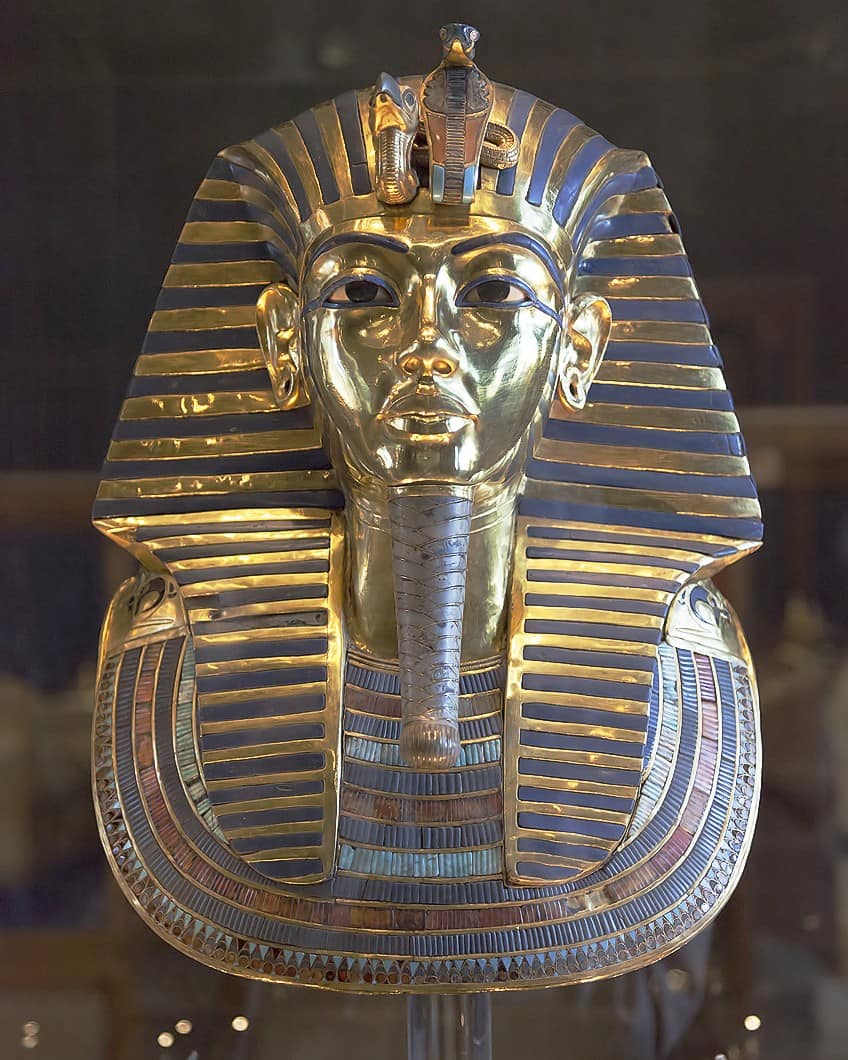
The mask itself was designed to appear like the Egyptian god of the afterlife, Osiris, and it sits at 54 cm (or 21.3 in) tall and weighs about 10 kg (or 22 lb). This is not a small or light mask, but a large and ornate thing that was meant to carry the pharaoh to the afterlife.
There are also inscriptions on the back of the mask that are part of an ancient spell from the Book of the Dead, and this spell existed long before the reign of Tutankhamun.
Rosetta Stone (196 BCE) from Egypt
| Creator | Unknown |
| Date | 196 BCE |
| Materials Used | Granodiorite |
| Function | Decree |
| Discovery Location | Rashid, Egypt |
The Rosetta Stone is one of the most famous African artifacts and also one of the most important. This artifact is a stele that is made of granodiorite and is full of inscriptions in three alphabets. It is written in Ancient Egyptian hieroglyphics and Demotic script, and it also makes use of Ancient Greek. This actually meant that this immensely important item allowed us to decipher Egyptian script for the first time since the collapse of the Roman Empire as no one could read it any longer.
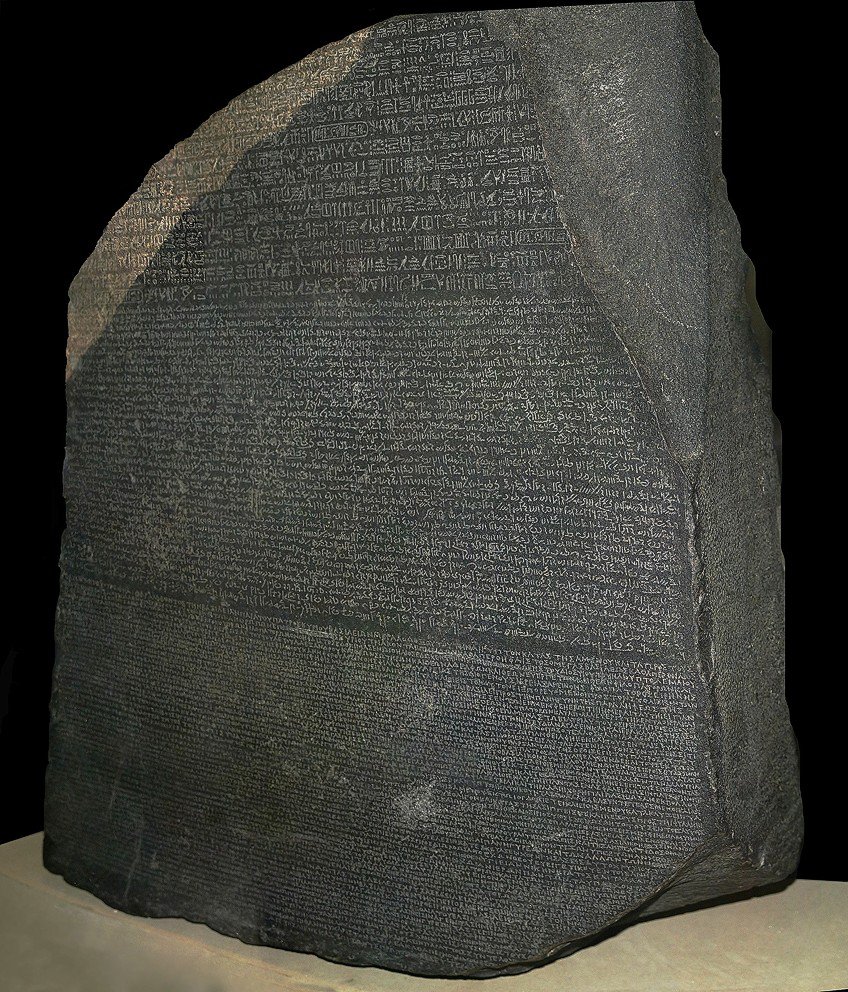
This artifact was created during the Hellenistic Period and stands at a height of 1,12 m (or 3.6 ft) with a width of 0.75 m (or 2.5 ft) and a thickness of 0.28 m (or 11 in). It is not the largest artifact in the world, but it certainly has become one of the most famous African artifacts and after the British defeated the French, they took the Rosetta Stone to the British Museum in 1802.
It has been on display there ever since and has actually become the most visited object in the entire museum.
Lydenburg Heads (Around 500 CE) from South Africa
| Creator | Unknown |
| Date | Around 500 CE |
| Materials Used | Terracotta |
| Function | Ceramics |
| Discovery Location | Mashishing, South Africa |
The Lydenburg Heads is a collection of seven terracotta heads that were discovered in South Africa in the town of Lydenburg (officially named Mashishing). These Ancient African artifacts are some of the oldest examples of Iron Age artworks in Southern Africa. They were discovered by accident by a local child who later, as an adult, returned and excavated the area. He discovered the heads and pieces of other pottery.
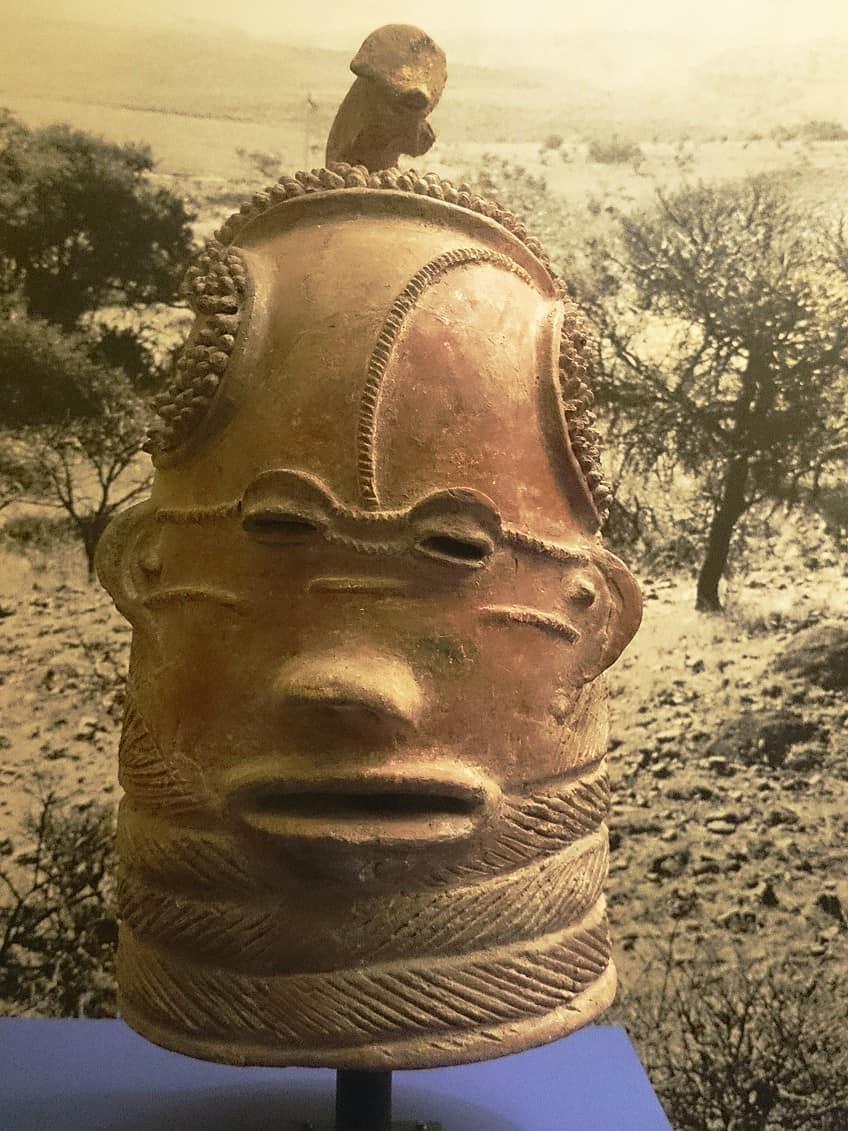
The heads themselves were reconstructed as two larger and five smaller heads, all of which are quite distinct from one another, and these heads have allowed researchers to investigate some of the earliest instances of Ancient African sculpture and pottery to understand the kinds of technology they used and developed.
The detail that went into these particular items indicates that they were likely highly valued items within the society that created them.
Golden Rhinoceros of Mapungubwe (1075 – 1220 CE) from South Africa
| Creator | Unknown |
| Date | 1075 – 1220 CE |
| Materials Used | Wood and gold |
| Function | Royal item |
| Discovery Location | Mapungubwe Hill, South Africa |
The Golden Rhinoceros of Mapungubwe is a small African artifact from the ancient medieval Kingdom of Mapungubwe, which was a powerful kingdom at the time and a center of trade in the region. This particular item was discovered on a royal grave, and it is a small wooden engraving that is covered in golden sheets. It’s also small enough that it’s able to sit, quite comfortably, in the palm of someone’s hand.

This particular kingdom was one of the earliest Southern African kingdoms, and it would eventually lead to the creation of the Kingdom of Zimbabwe in the 13th century. While this particular kingdom didn’t last all that long at around 80 years, it was a society that managed to create one of the earliest examples of this kind of a sculpture in Southern Africa.
The Golden Rhinoceros indicates the kind of hierarchical monarchy that likely existed within this particular society.
Zimbabwe Birds Sculptures (12 – 15th Centuries CE) from Zimbabwe
| Creator | Unknown |
| Date | 12 – 15th centuries CE |
| Materials Used | Soapstone |
| Function | Monument |
| Discovery Location | Great Zimbabwe, Zimbabwe |
The Zimbabwe Birds is a collection of ancient Zimbabwe artifacts made out of soapstone. They were once found throughout Great Zimbabwe, the ancient capital city of the Kingdom of Zimbabwe. These Zimbabwe Birds have become an immensely important symbol in the country as they have been used by numerous national and private organizations in the country as part of logos and symbols. These are immensely important images for the country.
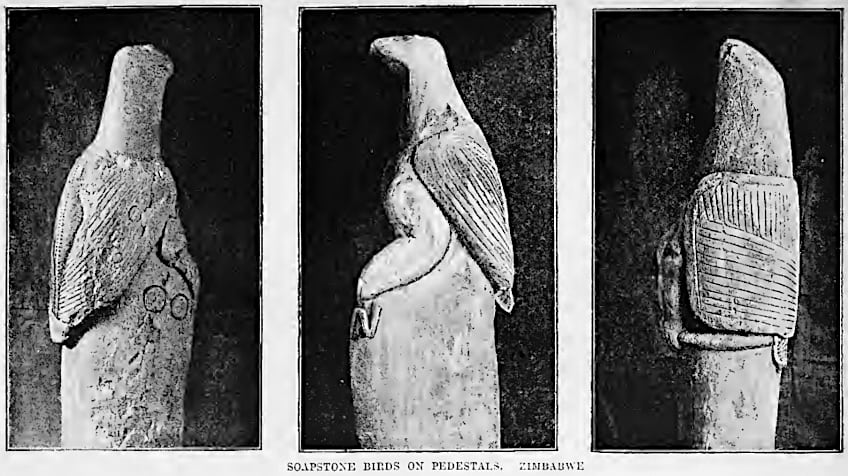
The actual bird statues are important Zimbabwe artifacts that are all about 40 cm (or 16 in) tall that were perched atop 90 cm (or 3 ft) tall columns. Statues of this variety have not been discovered anywhere else and are a unique aspect of the ancient Zimbabwean culture. However, these statues were stolen from the ancient site by a European explorer named Will Posselt. He hacked them off their pedestals and later sold them.
They were on display in various locations until they finally found their way into a number of European museums. They have not all been returned.
Benin Bronzes (From the 13th Century CE) from Nigeria
| Creator | Various |
| Date | From the 13th Century CE |
| Materials Used | Brass and bronze |
| Function | Historical sculptures |
| Discovery Location | Edo, Nigeria |
The Benin Bronzes are a series of brass and bronze metal sculptural plaques that were once prominently displayed in the Kingdom of Benin’s royal palace. These important West African artifacts may have been under the ownership of ancient African royalty, but they were very fundamental to the history of the Benin people as they were used to record historical events. They have also come to be associated with the golden age of bronze and brass metalworking in the kingdom, especially because of their more naturalistic design and presentation.

However, these items were looted during the Benin Expedition of 1897. During that punitive attack, the Benin Bronzes, along with many other African artifacts from the kingdom, were taken. These pieces would then wind up throughout Europe and, most notably, in the British Museum.
There are very few of these important West African artifacts that have been returned to Nigeria, and they can still be found throughout the world.
Seated Figure (14th Century CE) from Mali
| Creator | Unknown |
| Date | 14th century CE |
| Materials Used | Terracotta |
| Function | Ceramic sculpture |
| Discovery Location | Djenné-Djenno, Mali |
The Seated Figure is one of many such terracotta figures that were found in Mali. This particular instance of Ancient African sculptured clay depicts a figure who is hugging their legs to their chest with their head on their knee. The figure may have been depicted in a state of some kind of anxiety or prayer. We do not know enough about these ancient pieces to be able to know any of this for certain.
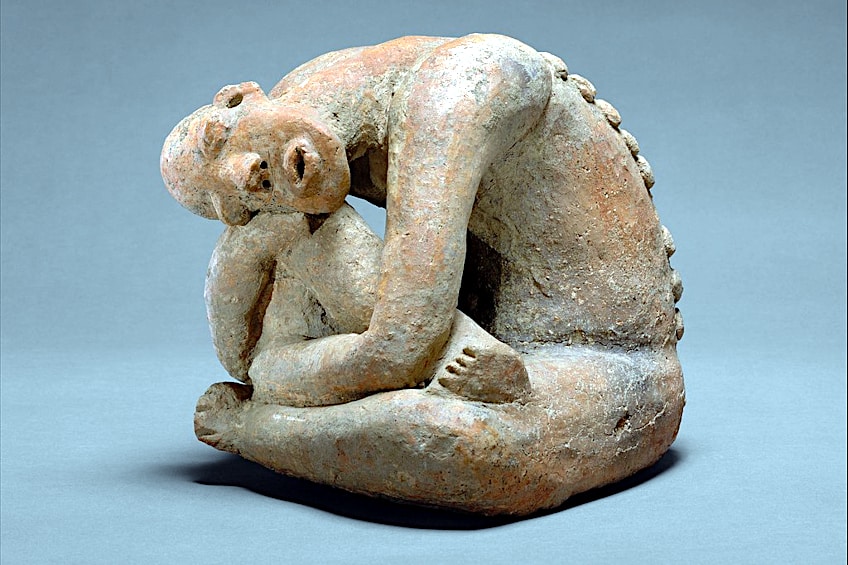
This figure, along with many others, was discovered in an area called Djenné-Djenno. This location was abandoned by the year 1400 CE, but many important African artifacts would still be found at the site. Some of the other items that have been found at this site include instances of iron, brass, and other clay items.
Thanks to the more personal nature of this particular figure, it’s possible that the creator had significant control over what it was allowed to be, but other than that, its meaning is one that we can only speculate about.
Bronze Head from Ifẹ̀ (14 – 15th Centuries CE) from Nigeria
| Creator | Unknown |
| Date | 14 – 15th Centuries CE |
| Materials Used | Copper alloy |
| Function | Royal bust |
| Discovery Location | Ifẹ̀, Nigeria |
The Bronze Head from Ifẹ̀ is an ancient African sculpture that is believed to depict a king, but we are not entirely certain of that. What we do know is that this is one of the 18 distinct copper alloy instances of ancient African sculpture that were discovered in Ifẹ̀ in 1938. These Ancient African artifacts are some of the most famous in existence, and they depict a more naturalistic representation of a human figure than is ordinarily found in much ancient African art.

In this case, the head was made using the lost wax technique, which does not mean that it’s a lost technique, but is rather the name for the method where the wax mold is destroyed in the process of creating the item. This copper alloy head is just shy of life-size and is only about 35cm high. However, it does make use of a striated naturalistic depiction with unmarked lops.
There is also a crowned headdress that was created through the use of beads and tassels.
Bangwa Queen (19th Century) from Cameroon
| Creator | Unknown |
| Date | 19th Century |
| Materials Used | Wood |
| Function | Sacred sculpture |
| Discovery Location | Western High Plateau, Cameroon |
The Bangwa Queen is a wooden carving that was originally either given to or taken by a German colonial agent named Gustav Conrau. The Bangwa Queen is an African artifact that originates from Cameroon, and there have been attempts to have the item returned to the country. However, this is still undergoing negotiation with the traditional leaders of the Bangwa and the Dapper Foundation in Paris, which currently owns the Bangwa Queen carving.
This carving is made entirely from wood and stands at 81 cm (or 32 in), and it is one of the most famous African artifacts in the world. It also has significant religious and spiritual importance to the Cameroonian people as this carving, and ones similar to it were generally made to depict the various royal wives and princesses who would later become Bangwa Queens.
So, they are important to the cultural heritage of the people of Cameroon.
Tsavo Man-Eaters (1898) from Kenya
| Creator | John Henry Patterson (1867 – 1947) |
| Date | 1898 |
| Materials Used | Animal skin |
| Function | Taxidermied animals |
| Discovery Location | Tsavo, Kenya |
The Tsavo Man-Eaters are not necessarily what we’d ordinarily deem to be an example of “African artifacts”, but they are an interesting artifact of sorts that originally descends from Africa. The name refers to both a pair of taxidermied animals and also to the animals themselves. These animals are so named because they were literally man-eaters. They were a pair of male lions who preyed on many of the construction workers that had been employed to work on the Kenya-Uganda Railway.
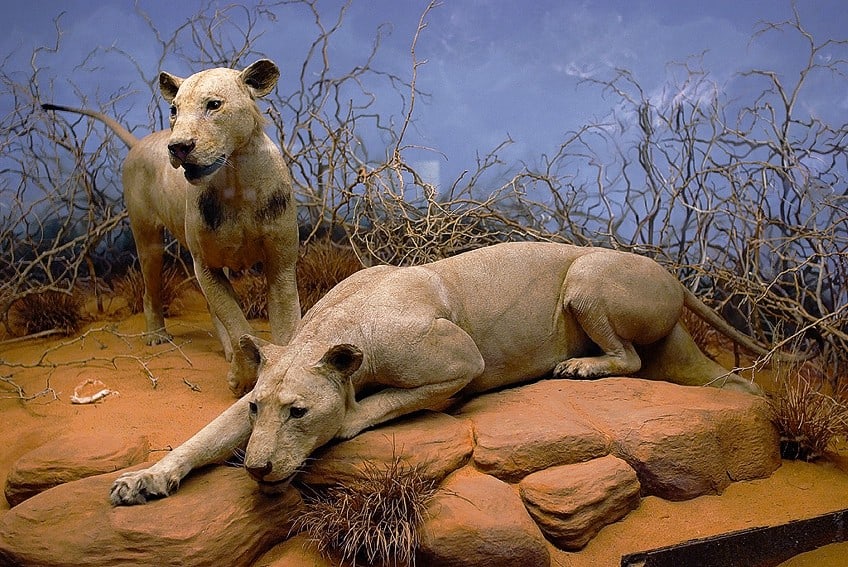
This pair of lions are said to have killed 135 people, but lower figures see it as being more in the realm of 28-31 victims (although these are high numbers even if it wasn’t as high as 135). The lions were ultimately hunted and ultimately killed by Lieutenant Colonel John Henry Patterson. He used their fur as rugs for about over two decades before they were sold to the Field Museum of Natural History. After that, they were taxidermied and are still on display. You can also visit their skulls. These lions have also become the source of extensive study because of the abnormality of animals specifically hunting humans.
We have come to the end of our discussion about African artifacts. We have looked at ten different African artifacts and their history and general characteristics. Some of them were instances of Ancient African artifacts but some of them were significantly younger. Either way, we hope that you learned a lot by reading this. So, have a great day/week/month ahead!
Frequently Asked Questions
What Is an African Artifact?
An artifact is any object of significant worth from an older period of time that has, in some way, been deemed significant. This means that African artifacts are simply artifacts that hold some kind of historical, spiritual, or social significance to the culture that once created them.
What Is the Most Famous African Artifact?
The most famous African artifact may be the Mask of Tutankhamun. It is one of the most famous items from Ancient Egypt and perhaps the most famous. While the pyramids themselves may be more famous in general, the Mask of Tutankhamun is the most famous artifact, or at least it may be the most famous item.
What Is the Most Important African Artifact?
Importance, like fame, is a difficult thing to determine conclusively. However, the Rosetta Stone may be the most important African artifact because of its usefulness as a tool to decipher Ancient Egyptian hieroglyphics. It played an integral role in Egyptology because of its usefulness as a translation guide. We wouldn’t know as much as we now know about Ancient Egypt if we’d never discovered it.
Liam Davis is an experienced art historian with demonstrated experience in the industry. After graduating from the Academy of Art History with a bachelor’s degree, Liam worked for many years as a copywriter for various art magazines and online art galleries. He also worked as an art curator for an art gallery in Illinois before working now as editor-in-chief for artfilemagazine.com. Liam’s passion is, aside from sculptures from the Roman and Greek periods, cave paintings, and neolithic art.
Learn more about Liam Davis and about us.
Cite this Article
Liam, Davis, “African Artifacts – Beauty, History, and Meaning.” artfilemagazine – Your Online Art Source. October 4, 2023. URL: https://artfilemagazine.com/african-artifacts/
Davis, L. (2023, 4 October). African Artifacts – Beauty, History, and Meaning. artfilemagazine – Your Online Art Source. https://artfilemagazine.com/african-artifacts/
Davis, Liam. “African Artifacts – Beauty, History, and Meaning.” artfilemagazine – Your Online Art Source, October 4, 2023. https://artfilemagazine.com/african-artifacts/.



